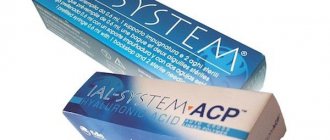From this article you will learn:
- Types of lasers for eyebrow tattoo removal
- Pros and cons of laser eyebrow tattoo removal
- Indications and contraindications for laser eyebrow tattoo removal
- Preparing for laser eyebrow tattoo removal
- How many sessions are needed and what determines the effectiveness of the procedure?
- Rehabilitation period
- Possible complications after laser eyebrow tattoo removal
- Incorrect laser tattoo removal of eyebrows
- What is better to choose for eyebrow tattoo removal: laser or remover?
- Is it possible to remove eyebrow tattoos using home remedies?
Not every time eyebrow tattooing ends successfully. Over time, defects may become noticeable in it, which are difficult to correct or disguise, and sometimes it is necessary to remove even the high-quality work of a master. In such situations, the laser eyebrow tattoo removal procedure will help.
What influences the effect
The tattoo itself
Everything matters: the color and chemical composition of the ink Tattoos: From Ancient Practice to Modern Treatment Dilemma; area and location of the tattoo; how long ago it was made; the degree of skin damage during the application process - the depth of the pigment and the presence of scars; what tool was used for application?
Skin type
The degree of skin pigmentation matters: whether it is dark or light. You can remove unnecessary decoration from skin of any color, but the operating mode of the device must correspond to it
Skin health is also important
Laser
The selectivity and efficiency of a laser depends on such indicators of its operation as wavelength and pulse duration.
Ideally, to destroy all possible colors of dye and minimally damage the skin, energy with a strictly defined wavelength is required Tattoos: From Ancient Practice to Modern Treatment Dilemma, which is not always possible. Therefore, some tattoo inks are more difficult to remove. Black pigment is the easiest to remove.
The gold standard for laser tattoo removal is the use of QS lasers (Q-Switch is one of the characteristics of a modern device) with the function of selecting the wavelength of laser radiation to match the color of the skin and ink, with a pulse duration measured in nanoseconds (1 × 10−9 seconds). Several procedures are required, once a month.
For the most modern and efficient lasers, which are particularly suitable for the removal of high-quality professional tattoos, the pulse duration is measured in picoseconds (trillionths). fraction of a second, 1 10−12 seconds).
How many sessions are needed?
The effectiveness of laser tattoo removal depends on many factors:
- wavelength;
- pulse duration;
- pigment color (the easiest way to remove black dye);
- the professionalism of the master and the quality of the technical base with which he works;
- age and skin type.
Today, the standard for tattoo removal is the QS laser (Q-Switch). The model automatically selects the wavelength and impulse strength depending on the depth of the pigment, the intensity of the shading and color. However, even the most modern equipment does not allow tattoo removal in one session.
Immediately after crushing the pigment, the tattoo takes on a pale appearance. After 15-20 minutes, the dye appears again, losing intensity by only a few percent. Most often, 7-8 visits to a cosmetologist are required to completely remove a tattoo. The intervals between each session are about a month. Therefore, you need to prepare for the fact that the procedure will be protracted and costly.
Removing tattoos with a remover also occurs in several stages. When removing a tattoo, it may only take a couple of sessions. For more serious tattoos, you need 3-4 trips to the beauty salon. “Rest” between sessions lasts 25-30 days.
The method is considered one of the most effective. Unlike a laser, it copes with a wide range of colors, but has a significant drawback. The remover can be used on an area of skin not exceeding 5 cm in diameter.
Reviveink is also more suitable for tattooing. After injection of the drug, the tattoo begins to gradually lose brightness. The pigment fades from a month to a year.
FAQ
What tattoos can a laser cut?
Almost all tattoos can be removed using modern laser machines, it all depends on the color of the tattoo, size and quality of the dye. Some take much longer, but it can also be removed. The correct choice of laser is important, since different tattoo colors require different lasers.
How many sessions does it take to completely remove my tattoo?
On average, complete removal of a printed image requires from 3 to 10 sessions, much depends on the quality of the paint and its location; non-color images are the easiest and fastest to remove, but with the right selection of laser devices, even the brightest and most colorful images can be reduced, even if it takes a year .
Is it possible to remove only part of a tattoo?
Naturally! During the procedure, the laser does not cover the entire image at once; it works pointwise. If you need to reduce some unfortunate part of the tattoo, then this can be done, or you can also not reduce it completely, make it lighter. Then, in place of the old unsuccessful or boring design, get a new and high-quality tattoo.
Is it true that some tattoos are easier to remove than others?
And so it is. Black, red, green and blue tattoos respond much better to laser pulses than other colors.
Does the age of a tattoo play a role in how quickly it fades?
Playing. Old tattoos are removed much faster than new ones. This is due to the fact that stale ink breaks down faster and is eliminated from the body.
Laser tattoo removal, does it hurt?
Everyone has a different pain threshold, but it’s clearly no more painful than stuffing it, and you can also apply an anesthetic cream before starting the procedure.
Is there a recovery period after the procedure and how long does it take?
On average, you should refrain from sunbathing for 4-6 weeks after the procedure if you had the procedure done in the summer. Also, despite the possible itching, you should not scratch it.
Will there be scars?
It shouldn't, if you contact a good, experienced master. Barely noticeable scars are possible, but if you consult a dermatologist, this can also be avoided. This way, no traces will be left at all.
Laser tattoo removal is the best option for those who want to really get rid of a tattoo without harming themselves. The main thing in this matter is not to try to save money, because many who have decided to get their masterpiece done do so precisely because they once saved on a good master and now have no choice but to say goodbye to the tattoo.
Don't even try to remove it yourself at home. Contact only professionals in this matter and do not neglect the recommendations so that you do not have to regret it even more. The results of such cheap breeding experiments can be easily found and viewed on the Internet. There are simply an abundance of photographs of such enthusiasts on the Internet.
Before removing a tattoo, do not forget to consult a doctor so that he can tell you more accurately, after assessing your skin type, which type of laser is best for you to remove the design.
Can tattoos be removed with different lasers? Which is better?
To remove tattoos, you can use various lasers: dye lasers (PDL), neodymium, ruby, nanosecond alexandrite. Each of them has its own wavelength and therefore acts predominantly on pigments of a certain color.
For example, a ruby laser is better at removing blue, green, blue-black, black and violet colors, and it is important that the pigments lie closer to the surface of the skin. The neodymium Q-switched device reduces the brightness of red, orange, violet and blue-black pigments, but does not “see” blue and green colors at all
It turns out that if the tattoo is colored, then to remove it you will have to go to different salons or clinics, first checking what equipment they use?
Not necessary. Not long ago, a fundamentally new type of laser appeared – the Picosure picosecond alexandrite laser. The principle of its operation is a mechanical effect on the skin. The trillionth of a second pulses deliver energy so quickly that the atoms in the treated area of skin move apart, forming plasma bubbles. This breaks the pigment into smaller particles. For example, if after exposure to a Q-switched laser the pigment can be compared to small pebbles, then after PicoSure it will be crushed to the state of sand. Such particles are eliminated much faster by the lymphatic system, which means the result is achieved faster and easier.
Procedure using the Picosure device:
- requires 2-3 times fewer sessions for tattoo removal;
- lasts a short amount of time;
- less painful than with any other laser;
- has a short recovery period - several hours.
As a result of a completely different operating principle, the Picosure picosecond laser can remove pigment of any shade, including rare ones. Clinical studies have proven that Picosure can even remove tattoos that cannot be removed with other types of lasers.
Scars do not form after tattoo removal with a picosecond laser: the skin is not overheated or injured during the procedure.
Benefits of laser removal
Removing tattoos from the eyes with a laser, as well as from other areas of the face, is an innovative technology that has become available relatively recently. Before its invention, specialists resorted to overlapping color, sometimes using the wrong technology; as a result, the client could get 3 eyebrow lines located on top of each other.
Unaesthetic eyebrows and eye arrows were painted over with camouflage dyes. In modern industry, the laser method is one of the most effective, popular and safe technologies. The method allows you to gradually reduce the dye without visible negative consequences - crusts, scars, scars.
The main advantages of the laser tattoo removal technique include:
- the ability to remove dye without leaving a trace;
- absence of severe pain at the time of radiation exposure;
- low risk of injury with bleeding;
- safety, hypoallergenic, versatility;
- visible effect after 1 session;
- no risk of burns;
- stimulation of the growth of own hairs;
- maintaining the integrity of the skin;
- a minimum list of strict contraindications.
Photos before and after laser eye tattoo removal
To remove tattoos, specialists use several techniques, the most popular being laser technology, as well as the use of a remover - a special chemical composition that destroys the color.
Comparative characteristics of popular cosmetic methods are presented below:
| Latest generation neodymium laser | Professional remover | |
| Operating principle | The targeted beam breaks the pigment into small particles, which are removed through the lymphatic system. | The chemical components of the remover combine with pigment particles, forming a substance that pushes the paint to the surface of the skin and comes off with the crust of the epidermis. |
| Traumaticity | If the laser technology is followed, the skin will not be injured. | The chemical composition mechanically destroys the upper layer of the epidermis, which can lead to skin trauma. |
| Effect | The pigment brightens instantly and evenly, the final result is in 20-30 days. | The pigment may come out unevenly, the final result after complete healing, 30-40 days. |
During laser dye removal, no scars are left on the skin and hair follicles are not affected. This method is one of the best in the technique of permanent correction, allowing you to remove the paint to the effect of “clean” skin.
The method of correction or removal of pigment with a neodymium laser is noted by cosmetologists as minimally invasive, non-traumatic, and does not require long-term recovery.
How to choose a clinic and specialist
Check whether the clinic and its doctors have a license for this type of service, read the reviews. Some doctors post publicly available examples of their work to help you evaluate their skills. Then call the clinic and ask a few questions:
- What kind of equipment does the doctor use? Modern stationary lasers are very expensive; not every medical institution can afford such a purchase.
- What is used to reduce pain.
- How to ensure your safety during treatment. When working with a laser, special protective glasses are required for both the doctor and the patient throughout the entire procedure, as the laser beam can seriously damage the eye. Powerful lasers must be located in a separate room with matte walls, and the doctor must be authorized to work with it.
- What are the possible complications, guarantees, and discounts for subsequent procedures (several of them will be required).
If no one, including the doctor, has answered your questions, this should alert you.
Preparation for the procedure
Before the actual laser treatment begins, the cosmetologist conducts a conversation with the patient, explaining to her the intricacies of the technique and the features of subsequent skin care.
We recommend reading: How long does it take to tattoo eyebrows?
Right before the manipulations, master:
- explains to the woman the principle of operation of the laser beam;
- removes makeup from the face;
- disinfects the area of future exposure;
- administer anesthesia (if necessary);
- puts on protective glasses for himself and the patient.
Pros and cons of using laser for tattoo removal
pros
- A very effective method with a minimum of side effects
- Non-invasive procedure that does not require surgery
- The procedure can be performed on an outpatient basis
- Virtually painless without postoperative period
Minuses
- It will take several procedures to completely remove a tattoo, especially a deep one.
- Possible post-operative scars and changes in skin color and texture
- There is a possibility of pinpoint bleeding, in which case immediate treatment of the wound is carried out
All these are just the main pros and cons. In fact, there may be more of them and it all depends on the specific person and the specific tattoo. The best option is to consult with an experienced cosmetologist before deciding to use a laser. If you have already tried unsuccessfully to remove an unwanted tattoo using other methods, then you should definitely try laser removal as an advanced and modern method.
Before you get a tattoo, remember: removing it is much more difficult than applying it. Oddly enough, this is especially true for tattoos applied by non-professional artists: it’s just that usually handicraft tattoos are applied to a greater depth. The difficulty of drawing a design also depends on the color and intensity of the pigment that tattoo artists use.
Neodymium laser – new possibilities
The appearance of the neodymium laser in aesthetic cosmetology was a real breakthrough and made the tattoo removal procedure gentle and effective. A cosmetologist can select the necessary parameters for drawing a pattern, which allows him to work with tattoos of any complexity and various sizes, as well as remove unsuccessful permanent makeup.
Neodymium lasers have several attachments that allow you to remove ink of different colors at any depth. The navigation system used in such devices contributes to the accuracy of beam guidance, which makes it possible to work with the smallest elements of tattoos.
Why remove tattoo
The number of people choosing to get a tattoo is increasing. Therefore, it is obvious that at the same time the number of those who want to remove it is growing. Many people are not satisfied with the appearance of a tattoo. Is the need for tattoo removal procedures increasing?
There can be many reasons why a person might want to do this. With the advent of tattoos, the problem of loss of skin elasticity and the appearance of wrinkles becomes more acute. Tattoos with names are most often removed. There are many cases where people remove tattoos due to problems finding a job.
The principle of laser tattoo removal
The principle of laser tattoo removal is quite simple and safe. The intensity and number of mixing sessions will depend on the following factors:
- color and quality of dye under the skin;
- depth and density of paint under the skin;
- the authenticity of the tattoo applied and the quality of the tattoo machine with which the image was made.
The first mention of laser tattoo removal dates back to the 1960s. At that time, this technology was not at all developed and could not bring the expected result. Today, only this procedure is the safest and most gentle for the skin.
Using a laser machine, the artist will pass over your tattoo with short laser pulses, the length of which is only 6 nanoseconds. After the first procedure, the image will become more faded and not so bright.
Advantages and disadvantages of laser tattoo removal:
- The success and popularity of this method of tattoo reduction lies primarily in the quality of the result. Just a few procedures can rid you of unwanted tattoos completely.
- The undeniable advantage of this method is that you do not have to live with huge, ugly scars that would inevitably remain after any other method of tattoo removal.
- The procedure is not characterized by painful or unbearable sensations.
The only disadvantage we can highlight is the price, although this procedure is not very expensive. The price largely depends on the size of the tattoo and the quality of the paint, that is, the number of procedures and the time it will take to remove the design, because it can vary greatly. Most importantly, this method is reliable and will completely rid you of unwanted marks.
Do eyebrows grow after laser tattoo removal?
Having changed an unsuccessful eyebrow color using laser treatment, some women worry that hair will stop growing in this place. In fact, neodymium ray has absolutely no negative effect on hair follicles, so you should not worry about this.
The brow ridges will lose their color after manipulation, but they will recover quite quickly.
Types of lasers for tattoo removal
Lasers for removing tattoos are quite diverse in their effects, but therefore completely different ones can be used for multi-color tattoos. The easiest way to remove a monochromatic tattoo is black. This usually takes an order of magnitude less time, however, most of the printed images cannot be displayed in 1 session. Sometimes this process can take up to a year, or even more.
Selective photocavitation
Many tattoo parlors offer tattoo removal using selective photocavitation. This method is good because it does not disturb the upper layer of the epidermis, thus, the printed image becomes lighter and lighter, session by session, until it disappears completely or becomes light enough for a new image to be applied on top of the old one.
The disadvantage of this method is the rather slow removal. Sometimes the process can take many months.
Ruby and alexandrite lasers
Green, red and black tones in tattoos are best removed by a ruby laser, but its disadvantage is, as in the previous case, that removal is too slow and the process is painstaking. At the same time, the alexandrite laser copes with a similar task many times faster.
Neodymium laser
The neodymium laser has gained the most popularity and recognition. This is due to the fact that it is able to destroy paint molecules from under the skin, without completely disturbing the skin and hair. And most importantly, for those who are afraid of the pain of the process, this method will be the optimal solution.
Another advantage of the neodymium laser is that it can remove a tattoo from a client even if the ink is too deep for other types of laser removal to achieve the desired effect. Again, there is no pain.
What to expect?
The process of removing it is different from applying it, so you should be prepared for this
It is also important to understand how the pattern will react to the beam: immediately after the operation, the paint will be very pale and almost merge with the skin. However, after about 10-20 minutes the color will return almost completely, making the pattern a little lighter
Duration of the procedure
The full procedure takes several months. As a rule, these are 4-8 sessions, one every month. Be patient in order to finish what you started.
However, a one-time event does not last long - 15-30 minutes. The device has a fairly large coverage area, so you can process the entire space quickly
If the pigment is applied to a complex part of the body, such as the face, it may take longer as extra care is advisable
Soreness
A burning sensation will be felt due to the heating of the cells. Specialists use various methods to combat these sensations: cooling, local painkillers and injections. However, it will not be possible to completely get rid of the pain.
Contraindications
There are both general and individual contraindications. The first type includes: skin diseases, cardiovascular diseases and pregnancy. An allergic reaction to coloring components is considered an individual intolerance. Even if the symptoms go away after stuffing, they may reappear during mixing.
Side effects and complications
Sometimes side effects occur:
- swelling, itching, pain, minor bruising;
- change in ink shade;
- allergic reactions;
- introduction of infectious bacteria.
Care
Instructions for caring for the treated body area:
After the removal procedure, after 3-4 hours it is necessary to remove the film; Wash the skin area with warm water and soap; Carefully wipe the tattoo with a soft towel until dry, apply DrPRO gel, Dexpanthenol cream, Panthenol in a thin layer one after another; Apply the cream every 3-4 hours, after rinsing the treatment area as indicated above. If it is not possible to wash with soap and water, be sure to wipe with a cotton pad soaked in Miramistin/Chlorhexidine, because
old ointment accumulates bacteria; Treat in this way for 2.5-3 weeks until complete healing.
Recovery period
Immediately upon completion of the manipulations, the master will definitely acquaint the client with the basics of caring for the skin of the brow ridges. During the recovery period of the epidermis, you need to handle your own skin as carefully and carefully as possible.
The rehabilitation period requires protecting the skin from infection, physical injury, mechanical damage, contamination, and exposure to ultraviolet rays.
For about two weeks you should follow the following rules:
- It is forbidden to sunbathe in open sunlight or visit a solarium, as this can lead to a violation of the tone and pigmentation of the skin.
- Take only mascara and avoid taking a bath. You cannot visit the sauna, bathhouse, or swim in the pool.
- It is forbidden to seal the treated area of skin with a plaster in order to keep it intact. Firstly, under the influence of air, healing will be more active, and secondly, when removing the adhesive part of the patch, it is easy to damage the integrity of the epidermis.
- For the first few days, it is better to avoid washing your face and cleanse your face with cotton pads soaked in a special lotion, micellar water, and tonic without alcohol.
- If a crust appears, be careful during care procedures. Forcibly removing it is strictly prohibited; there is a high risk of removing pigment particles and hairs, which will spoil the appearance of the eyebrow ridges. You need to be patient and wait for the crust to fall off on its own.
- For the first three weeks, peeling procedures, facial scrubs, and the use of ointments with hormones or antibacterial substances are prohibited.
- Do not use decorative cosmetics until the crust disappears completely.
We recommend reading: Permanent eyebrow makeup before and after healing
Laser tattoo cannot be removed, what should I do?
Exposure to a laser beam is considered one of the most effective techniques used to remove tattoos, tattoos and permanent makeup. But in some cases, the vaunted procedure does not lead to the expected result and the reason for this is:
What to do in this case?
First of all, choose a qualified specialist, preferably a dermatologist. Don’t be shy about asking for certificates for the equipment you use, and if you suspect its quality, refuse the procedure. It is imperative to follow all recommendations given by a specialist and, of course, monitor your health.
Removal without scar
The main factor that stops those who want to remove a tattoo is the scar, which in most cases remains for life. Many people do not know how to remove tattoos without scars. In order to avoid leaving marks on the body, you need to use a few tips:
- It is necessary to approach the choice of a master with great responsibility. A qualified specialist with significant experience in tattoo removal will be able to perform such a procedure with the highest quality possible, without consequences and with a minimal trace after the image is removed;
- The choice of venue is also of great importance. Good clinics and beauty salons are equipped with modern, high-quality equipment for tattoo removal without scars or marks;
- it is necessary to follow all the recommendations of qualified specialists for caring for the area of skin where the tattoo was removed, because it is the restoration that determines whether a scar will remain or not;
- after removal, it is necessary to treat the affected skin with special antiseptics and wound healing agents that promote rapid healing of the wound without scars. They are usually prescribed by specialists during the procedure;
- if a fresh mark remains, it is necessary to intensively use special anti-scar ointments that will reduce it to “no”.
In the end, it is important to note that modern technologies make it possible to remove a tattoo; the main thing is to know where and how to remove a tattoo with minimal consequences. To do this, it is better not to save money, but to contact qualified specialists in specialized institutions, where they will have all the necessary equipment of appropriate quality for the effective removal of tattoos and permanent makeup.
| Go to the catalog of tattoo removal machines |
Neodymium laser
This type of laser is safer than the previous ones, since its rays are not absorbed at all by the melanin of the skin. It is used to remove black and blue pigments, and in second harmonic mode it can remove purple, orange and red pigments.
Q-switched neodymium laser is not suitable for green and blue light removal. It does not completely remove yellow colors, and its use is quite painful. The device has one more feature: after several sessions, usually after the third, many tattoos lose sensitivity to its rays. As a result, the bright color pattern becomes faded, but does not disappear completely.
Removing colored tattoos with a neodymium laser takes a long time: the interval between sessions, during which the lymph removes fragments of pigment, ranges from 5 to 8 weeks.
Laser tattoo removal – all the most important things
Removing a tattoo is not a problem. Over the entire existence of such art as tattooing, many ways have been invented to get rid of the design. From surgical excision to electric burning. But laser removal has long been recognized as the most effective method.
How does a laser remove a pattern from the human body? To do this, let's remember the mechanism of action of the tattoo itself.
The pigment is injected into the upper layers of the skin using a special machine. Once inside, the body turns on a protective reaction and surrounds the dye with connective tissue cells in order to prevent spread throughout the body. And since the pigment particles are larger than a human cell, they are not able to leave the body on their own. And only laser light pulses are able to destroy the pigment into smaller particles, due to which it is removed from the body naturally through the lymph.
Methods of influence
There are two main types of laser exposure.
The first one is selective.
The laser acts only on the subcutaneous formation, leaving the outer layer without damage. The device is adjusted individually for each pattern to achieve the safest and most effective result. Destroyed pigments are removed within 3-4 weeks.
The second is ablative.
But in the second option, the so-called grinding occurs, i.e. The device acts not only on the internal cover, but also on the external one. This method is very widely used for anti-aging treatments as it works mainly in the upper layers of the dermis. Therefore, it is ideal for images located in the uppermost layers of the epidermis.
The time it will take you to completely remove your tattoo depends on the quality of the design and the amount of work. This can take a month or a whole year.
Advantages
- Painless effect. The only thing you can feel is a slight tingling and burning sensation;
- No scars or scars. The exception is tattoos applied by an inexperienced artist into the deep layers of the skin. In such cases, no one can guarantee you that after the procedure you will not have any traces;
- Capable of removing permanent makeup and age spots.
But the laser still has several disadvantages. The number of sessions you need depends on the size, color and quality of the drawing. In one session, the tattoo discolors by an average of 10-15%. Each session is carried out strictly once a month in order to allow the skin to recover a little.
Therefore, the more sessions, the longer and more expensive the entire tattoo removal process will cost.
Side effects
When the pigment is destroyed, there is a possibility of allergic reactions, as well as redness, itching, and swelling, which may go away after a few hours.
The use of laser is contraindicated:
- Pregnant and nursing mothers;
- If the skin has had a chemical or mechanical effect (peeling, scrub), less than two weeks ago;
- If you are taking medications that increase skin sensitivity to ultraviolet radiation;
- Heavy tan;
- Diabetics and people with chronic diseases;
- Blood disease and cancer patients;
- If inflammatory processes occur in the body and on the skin.
Before you begin the removal procedure, be sure to visit a doctor, get examined and consult.
Useful tips
- Contact highly qualified specialists, because your health depends on their competence.
- Choose only trusted clinics and aesthetic beauty centers. They are equipped with the most modern and high-quality equipment.
- After the procedure, try to avoid excessive exposure to ultraviolet radiation on the skin during the first two months. At the same time, you will have to give up washcloths, self-tanning and reduce the time you spend in the shower to avoid unnecessary skin irritation.
- And finally, the most important advice: under no circumstances experiment with removing tattoos at home! You can find hundreds of folk recipes that promise 100% results without chemicals and extra costs, but none of them actually work. You will not only waste time, but you can also harm your health and disfigure your skin.
And remember: any problem can be solved, the main thing is to find a competent approach.
Laser tattoo removal before and after – photo examples from 01/14/2018
Watch the video:
Prepared by: anneiden (Anna)
Tattoo removal methods
Today, there are several ways to remove tattoos or permanent makeup in a salon. There are also many ways to remove tattoos at home, but all of them are not safe and can not only damage the skin, but also seriously harm human health. The procedures carried out in the salon will not cause harm to health, but they still injure the dermis and in some cases leave scars:
- Surgical removal involves removing several thin layers of skin using a special device. One of the most effective methods of tattoo removal, suitable only for working on small areas of the skin.
- Dermabrasion or resurfacing is used more often to remove shallow tattoos. Under local anesthesia, the tattoo is polished with a diamond cutter. Dermabrasion is the most inexpensive and very effective method of removal, despite the fact that after the procedure the skin takes a long time to recover and scars remain at the site of tattoo removal.
- Cover up is a method of covering a tattoo with paint of a color matched to the skin tone. Suitable for filling small designs. It does not leave scars, but in case of tanning, the difference between the skin color and the color of the fill will be noticeable.
- Coagulation – burning out a tattoo with electric current. The procedure is performed in the salon under local anesthesia. When using current, a crust of ichor forms at the site of burning, which will fall off on its own over time. A coagulation session leaves scars on the body.
- Removal with liquid nitrogen is the most inexpensive and fairly effective procedure. It is performed under local anesthesia. The skin at the tattoo site is covered with material soaked in liquid nitrogen, cooled until an ice crust forms, then the dead layer is removed.
- When using ointments to remove a tattoo, the skin is pierced in several places and the product is rubbed in. When using this method, no scars are left, but the effect after a set of such procedures is not always ideal and takes quite a long time to achieve.
- Laser tattoo and make-up removal is the simplest, most convenient and effective method today. When a permanent pattern is removed with a beam, there are no scars left on the skin; burns are possible, but they are small and heal quickly. See photo:
In the largest US city, New York, tattooing was prohibited from 1961 to 1997. In Japan, to this day, some establishments do not allow people with permanent patterns on their skin to enter their premises.
Positive and negative sides
Known methods of tattoo removal in the form of exposure to liquid nitrogen, burning with acid, and various types of physical impact leave behind extremely unattractive consequences. Laser tattoo removal naturally has a number of advantages over all other existing methods:
- Complete disappearance of the tattoo.
- Spot removal does not affect the skin around the pattern.
- During the procedure there is no severe pain and there is no blood.
- The effect can be observed after the first procedure.
- Modern devices meet all necessary standards.
The disadvantages include the fairly high cost and the time it takes for the tattoo to completely disappear.
Contraindications for laser tattoo removal
There are some categorical contraindications, the presence of which makes tattoo removal impossible:
- skin diseases or infections;
- AIDS and HIV;
- the body's tendency to form keloids;
- blood diseases, blood clotting disorders;
- oncological pathologies;
- viral and bacterial diseases;
- exacerbation of chronic ailments;
- very weak immunity;
- epilepsy;
- a period of illness accompanied by high fever.
Relative contraindications:
- pregnancy and lactation;
- diabetes;
- fatigue, depression, stress;
- hepatitis;
- critical days.
During the consultation, the doctor must be provided with all the necessary information to avoid unpleasant consequences.
Contraindications
The procedure is safe, but with any interference in the normal functioning of the body it has contraindications. Listed below are the main reasons why you should not resort to laser hair removal.
- Acute stage of herpes;
- Open wounds in the removal area;
- Oncological diseases;
- Infectious diseases;
- Pregnancy;
- Diabetes mellitus with ulcerative complications;
- Reduced immunity due to various diseases and therapy;
- Taking pharmacological drugs with a photosensitizing effect (increased sensitivity to the sun causing allergies or spots on the skin).
Contraindications and possible consequences
To reduce the likelihood of scar tissue formation and other negative side effects, it is necessary to clarify that the client does not have conditions in which these manipulations are strictly prohibited.
Contraindications to laser treatment:
- oncological diseases;
- pregnancy;
- breastfeeding period;
- HIV infection;
- allergy;
- hypertension;
- diabetes;
- skin pathologies, inflammatory processes in the area of future exposure;
- age up to 18 years.
If contraindications are not taken into account, the risks of a negative reaction of the body to this procedure increase sharply. The likelihood of complications increases:
- hematomas;
- scars;
- swelling of the skin;
- pigmentation;
- skin infection.
If the procedure was carried out according to the rules, then the side effects will be minimal and will quickly disappear. Otherwise, you may need the help of a doctor.
Safe hair removal in the tattoo area
In fact, in some cases, it is possible to safely perform laser hair removal on the tattoo area. There are three ways to do this:
- First, take a course of hair removal, and only then, after the recovery period, apply a tattoo.
- Paint over the elements of the drawing with a white cosmetic pencil.
- Use a special neodymium laser operating in the nanosecond range.
The first method is optimal. First, you remove all unwanted vegetation, and only then go to a specialist to add pigments to the skin. It is best to carry out laser hair removal using the Apogee+ device, manufactured by Cynosure, a world leader in the field of cosmetic lasers. This is an alexandrite device that removes vegetation on the skin of phototypes I-III in 3-6 sessions. At the same time, the device also removes age spots of varying complexity. If you have light hair, or dark skin, or have different colored hair in one area, such as bleached hair and natural hair, it is better to use the Elite+ laser. It consists of two lasers at once - alexandrite and neodymium, and allows you to remove any hair on all skin phototypes.
The inking method helps avoid burning or altering the tattoo. The hair above the design itself will not be removed: no specialist will be able to paint only the skin with jewelry, leaving the vegetation unpainted. Moreover, such a dyeing technique does not exist.
The only way to epilate above the tattoo itself is to use a neodymium laser in the nanosecond range. The essence of this device is to seal the capillaries that feed the hair follicles, causing hair to fall out in the treated area. And this is not the same neodymium laser that is used to remove tattoos.
A neodymium laser operating in the nanosecond range is contained in the Elite+ device. The device allows you to make fine adjustments, so that the tattoo pigment remains intact. The procedure with this laser is characterized by a low level of pain and high speed.
Thus, hair removal using most lasers is incompatible with tattoos: the latter are best done after you have completed a course of removing unwanted hair. However, the procedure can be performed with an already applied tattoo - using the Elite+ nanosecond neodymium laser.
What should you be wary of when removing a tattoo?
When set correctly, the laser beam does not heat the skin so much as to cause a burn, which will then turn into a scar. Only swelling and redness will occur and should subside within a short period of time.
You can immediately understand whether a scar will remain after laser tattoo removal. If at the end of the procedure the skin turns pale, the likelihood of scar formation is high.
The following signs indicate that the procedure took place without trauma to the skin:
- the tattoo has changed in color;
- A few minutes after the procedure, the skin became slightly swollen and red.
If you see such changes, do not insist that the specialist continue the procedure. Even if the pigment has changed color dramatically (a red dye containing iron oxide can do this), this is not a reason to prolong the laser treatment session. With subsequent procedures, the brightness of the pigment will decrease.
After laser treatment, the tattoo should gradually fade. There should be no scars or hemorrhages in the skin after the procedure.
In fact, not all lasers are equally dangerous. Most often, scars remain after using nanosecond alexandrite and ruby devices, since they are quite difficult to set up.
What determines the effectiveness of the procedure?
Laser pigment removal technology is one of the most effective methods in aesthetic cosmetology.
Several types of laser are used for procedures for removing subcutaneous pigment:
- Ruby. The device allows you to effectively display “complex” colors - red, crimson, yellow, green.
- Erbium. Based on the principle of photomechanical reaction, it acts delicately and is used to remove superficial patterns with weak pigmentation.
- Alexandrite. Suitable for working with faded tattoos, the beam is not able to destroy the bright pigment.
- Carbon dioxide. The beam is able to penetrate deep layers, removing dye of any type and color. The disadvantage of the device is the high risk of injury with long-term rehabilitation.
- Neodymium. The modern, most versatile device is capable of removing any pigment at different depths of the skin layers.
The choice of the type of equipment, as well as the depth and intensity of the beam’s impact on the subcutaneous layers is determined by the cosmetologist after assessing the condition of the skin and the nature of the introduced pigment.
There are also a number of other determining factors that can affect the final aesthetic result:
- Individual client request and method of initial pigment application. If, at the client’s request, the effect needs to be made less noticeable, 1 procedure will be required. If the pigment was introduced using the hair technique, it is easier to remove than a solid line with maximum color filling.
- Type of equipment . The neodymium laser pigment removal technique is universal, safe and effective.
- Type of dye . The pigment based on metal oxide is removed from under the skin quite slowly. After laser exposure, the contours may noticeably darken. If the pigment is made with the addition of iron dioxide, after correction the eyebrow shade may change to grayish-brown.
- Insertion depth. The beam acts on the surface of the epidermis. If the tattoo was done too deeply, several sessions will be required until, layer by layer, the pigment is completely destroyed.
- Color . The darker and more saturated the tone, the easier it is to destroy it with a beam. The beam does not affect light colors close to the skin tone. Crimson, yellow, green and red shades are also difficult to remove. If the composition includes tattoo ink, the laser also has little effect on it. Black and dark brown colors are best removed.
One of the factors influencing the effectiveness of the procedure is the initial skin tone. It has been noted that in patients with dark skin, the laser is less effective than in those with fair skin. Dark skin attracts the rays more strongly and scatters them, preventing the removal of the dye.
So what to expect during and after your removal session?
If you perform laser tattoo removal in a professional clinic, then the conditions there will be only outpatient - sterility, hygiene, and efficiency.
If you are very afraid of pain, you will be given an anesthetic. The painful sensations will be akin to hot oil hitting the skin, but quite tolerable. Next, the doctor will conduct a laser tattoo removal session for 20 minutes. After it, you can return to your business; the procedure is non-invasive and therefore does not violate the integrity of the skin.
After the session, you will experience mild discomfort. This is normal in the first 2 days. If the pain bothers you greatly, you can apply an ice pack. You may notice swelling or redness on the skin at the site of the tattoo or permanent makeup. As well as white blisters or capillary bleeding. After a day, the white bubbles will be covered with a crust, which is strictly forbidden to touch (photo). After 2-3 weeks, these crusts will fall off on their own, and in their place will be new, healthy skin (photo). After 5-7 weeks, you will notice that the tattoo design has lightened and the skin has returned to normal. For small tattoos, one session is enough, and for larger ones, from 2 to 5; your cosmetologist will tell you the exact number. After the procedure it is recommended:
- Apply panthenol or its analogues to the skin, and avoid contact with water on this area of the skin for 2-3 days;
- Then, treat with panthenol 2 times a day for 7-8 days;
- Do not sunbathe under any circumstances and use sunscreen (preferably with an SPF effect of at least 35). Neglecting this recommendation may lead to hyperpigmentation of the skin;
- Do not touch or scratch the tattoo;
- Do not wipe with alcohol or alcohol-containing products for 5 days;
- Do not bandage or cover the tattoo site with a band-aid.
To reduce the risk of complications, we recommend not using the services of tattoo parlors, but rather contacting a qualified cosmetology clinic. An artist in a tattoo parlor without a medical education will never perform this procedure efficiently. The Louis Dor cosmetology clinic in Moscow performs inexpensive laser removal of tattoos and permanent tattoos using a neodymium laser. Video of the procedure in the salon.
You can find out more about all the promotions and discounts of the Louis Dor salon chain in Moscow by filling out the form below, and our consultant will definitely contact you. Thank you for trusting your health and beauty to us! We appreciate your choice.
Stages of the procedure
After completing the preparatory stage, the master proceeds directly to the tattoo removal procedure.
The specialist must exercise caution and high precision when working, since unprofessionalism can lead to burns and long-term non-healing scars.
The process goes like this:
- the master treats the desired area with disinfectants;
- puts on safety glasses for himself and the client;
- turns on the laser unit and affects the desired areas of the skin;
- the treated area is moistened with a special spray to relieve irritation, and a cooling pack is applied.
In some cases, a test procedure is required before removal begins. For example, in order to check how well a light pigment is removed.
You can see a clear example of exactly how a neodymium laser works on pigmented areas of the skin in the following video:
A laser eyebrow treatment specialist will tell you about all the nuances of the procedure, the correct procedure and possible side effects:
Excursion into history
Do you need tattoo removal? There is no need to use barbaric advice from the Internet. With the development of technology, the process of drawing and mixing equipment has improved. Let's take a closer look at how drawings were made on skin before and how they do it now.
Interesting: Among the celebrities who have had tattoos removed is the late American President John Kennedy. The famous politician had a turtle on his shoulder, which he created at the insistence of Mrs. Kennedy.
Earlier
Before reading this article, did you google how to remove tattoos? You must have encountered a lot of shocking information. Indeed, in order to get rid of prison or slave markers, or to display an indecent picture made by mistake, extremely harsh measures were used:
- erasing a layer of skin with an abrasive;
- burning with iodine;
- treatment with celandine, potassium permanganate;
- use of bleach, inorganic acids;
- burning with an iron or soldering iron.
Particularly sophisticated citizens managed to use flesh-eating larvae.
Yes, indeed, the drawing disappears. But after tattoo removal, scars are not the most pleasant looking, and the pain in the process does not justify the end result.
Later, the practice of reduction became gentle and they began to use the method of surgical removal. During the operation, the doctor excises a skin flap with a tattoo and closes the wound with a cosmetic suture. If the tattoo is large and the edges of the wound are located far from each other, then skin grafting from another part of the body may be required. The method is effective, but painful and not particularly safe. Yes, and suitable for small drawings.
To be fair, it should be said that tattoos were removed in this way mainly by those for whom their presence greatly interfered with their lives. For example, escaped convicts. Other tattoo owners, for example, travelers, sailors or military men, on the contrary, were proud of the drawings and did not miss the opportunity to demonstrate them.
Now
Modern methods are more humane and humane:
- camouflage - a flesh-colored pigment is applied over an existing tattoo;
- cryosurgery - destruction of the pattern using liquid nitrogen;
- electrocoagulation - destruction of pigment using high-frequency electric discharge;
Of course, they are much safer than those listed above, but after tattoo removal there is a risk of scars, age spots and other signs of intervention.
Interesting: Those who were really interested in tattoo removal methods were the residents of the Japanese province of Chukuzen in the years 1603-1867. The fact is that, as punishment, for each crime the criminal was inflicted with one line of hieroglyph. If there were more than three crimes, the result was a hieroglyph that roughly meant “dog,” which was very humiliating.











